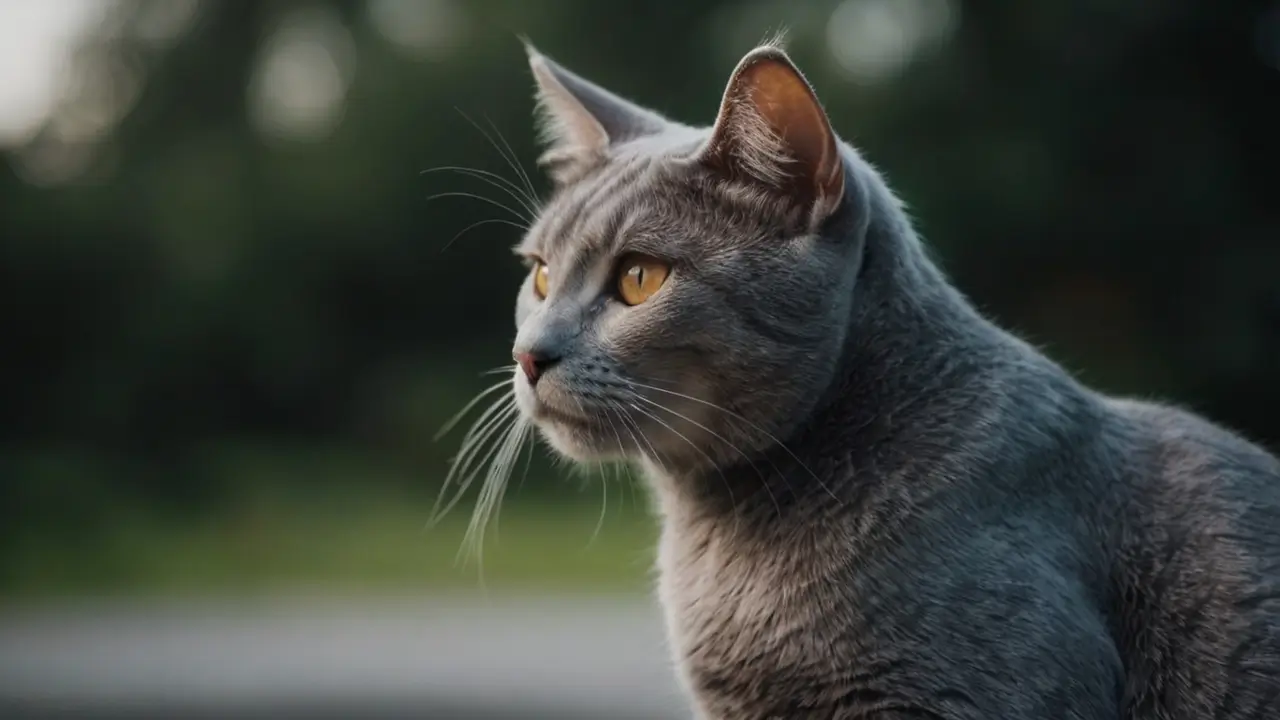Grey cats are known for their elegance, calm demeanor, and mystical charm. Whether you’re admiring a soft grey tabby cat or cuddling a fluffy grey and white cat. These felines carry a unique beauty that cat lovers can’t resist. This blog post explores everything about grey cat breeds, behavior, and care. If you’re planning to bring one home or already have a grey cat companion. This guide offers valuable insight. And remember to love your pets. They’re more than animals; they’re family.
What Makes a Grey Cat Unique?
Grey cats have a special appeal due to their soothing coat color. Often associated with intelligence, calmness, and balance. The grey coat color can appear in several patterns and shades, from silver to bluish-grey.
Explore the beautiful personality of the tuxedo cat. Learn about its care, health, and grooming
Grey Is Not a Breed
It’s essential to understand that “grey cat” refers to color, not breed. Many different breeds have grey-colored individuals. These include Russian Blues, British Shorthairs, Chartreux, and more.
Popular Breeds
Several recognized breeds feature grey as a standard or common coat color. Here are the most notable ones:
1. Russian Blue
- Sleek, short blue-grey coat
- Known for green eyes and a gentle temperament
- Hypoallergenic qualities
2. British Shorthair (Grey Variant)
- Dense, plush coat
- Calm and affectionate
- Often called the “teddy bear” of cats
3. Chartreux
- Muscular build with a woolly blue-grey coat
- Quiet, loyal, and intelligent
- French origin, very rare in the USA
4. Nebelung
- Long-haired version of the Russian Blue
- Soft, shimmering grey coat
- Reserved but deeply affectionate
5. Korat
- Native to Thailand
- Short-haired, silver-tipped grey coat
- Considered a symbol of good luck
These cat breeds each have unique features. But they all share the calming grey hue that cat enthusiasts adore.
Are you interested in celebrity cats? Then explore Taylor Swift’s ragdoll cat, Benjamin Button
Grey Tabby Cat: Personality and Patterns
Grey tabby cats are not a breed but a coat pattern. “Tabby” refers to the striped, swirled, or spotted pattern seen on many grey cats. Here’s what makes grey tabby cats special:
- Classic Tabby: Swirled or marbled coat pattern
- Mackerel Tabby: Thin stripes running vertically
- Spotted Tabby: Leopard-like spots
- Ticked Tabby: No visible stripes, only flecks of color
Grey tabby cats are often playful, friendly, and curious. Their coat may feature a beautiful blend of silver, charcoal, and steel shades.
Grey and White Cat: A Striking Contrast
Grey and white cats combine the elegance of grey with the cleanliness of white. The white patches usually appear on the chest, face, or paws.
- They’re found across multiple breeds
- Personality depends more on breed and environment
- These cats are often photogenic and attention-grabbing
Whether it’s a grey and white tuxedo pattern or a simple bicolor split. These cats are truly eye-catching.
Learn about the Empress Tang, a Calico Persian Cat of Martha Stewart, here
Do Cats Get Grey Hair with Age?
Just like humans, cats can also show signs of aging through their fur. But do cats get grey hair?
- Yes, but it’s subtle and less common
- Most often seen around the muzzle or paws
- More noticeable in black or dark-colored cats
- Not a medical concern unless paired with other signs of aging
This topic do cats get grey hair? is often misunderstood. Unlike humans, cats don’t turn completely grey. But may show a salt-and-pepper appearance over time.
Choosing the Right Grey Cat Names
Naming your cat can be a fun and personal experience. Here are some popular and creative name ideas:
1. Popular Cat Names:
- Ash
- Smokey
- Misty
- Silver
- Storm
- Luna
- Blue (for Russian Blues)
2. Inspired by Nature:
- Pebble
- Cloud
- Shadow
- Dusty
- Fog
Grey cat names can reflect personality, appearance, or even favorite fictional characters. Choose something that fits your cat’s charm.
Temperament and Behavior of Grey Cats
While coat color doesn’t determine behavior. Many grey cats are described as:
- Calm and peaceful
- Independent but affectionate
- Gentle and observant
However, behavior largely depends on breed, upbringing, and environment. For example:
- Russian Blues are shy but loyal
- British Shorthairs are relaxed and friendly
- Grey tabbies are usually outgoing and curious
Socialization and care play a more vital role in behavior than color or pattern.
Caring for Grey Cats: Grooming and Health
Keeping your grey cat healthy and beautiful requires proper grooming and regular vet visits.
1. Grooming Tips:
- Short-haired grey cats: Brush weekly to reduce shedding
- Long-haired grey cats: Daily brushing to prevent mats
- Use a lint roller to manage loose grey fur around your home
2. Health Care:
- Maintain a balanced diet
- Schedule annual check-ups
- Keep vaccinations and flea prevention up-to-date
- Watch for age-related issues like arthritis or dental problems
Are you worried about your cat’s health? Don’t worry, just provide them with the best dry cat food. To keep them healthy and happy
Indoor vs. Outdoor: What’s Best for Your Grey Cat?
For safety and longevity, indoor living is often recommended for all cats, including grey cats. Here’s why:
1. Indoor Cats
- Live longer (15+ years)
- Protected from cars, diseases, and predators
- Less likely to get lost
2. Outdoor Cats
- More exercise and stimulation
- Higher risk of injury or illness
Consider a compromise: a catio or leash training for supervised outdoor exploration.
How to Socialize and Bond with Your Grey Cat
Grey cats can form deep emotional bonds with their humans. Building trust is key:
- Start slow if your cat is shy
- Use positive reinforcement
- Respect their boundaries
- Schedule daily playtime
- Talk to them using soft, calming tones
A well-socialized cat is confident, affectionate, and more responsive to training.
Conclusion
Grey cats are not just beautiful. They’re filled with personality, intelligence, and charm. From sleek Russian Blues to playful grey tabby cats. These felines are ideal companions. Either you’re drawn to a grey and white cat’s contrasting beauty or exploring grey cat names. For your new kitten. One thing is certain: love your pets and they’ll give you a lifetime of joy.
FAQs
1. What breed is my grey cat?
If your cat is not a purebred. It might be a domestic shorthair or longhair with grey coloring. Consult a vet or DNA test for exact identification.
2. Do grey cats shed a lot?
Shedding depends on the breed and season. Long-haired grey cats typically shed more than short-haired ones. Specially during spring and fall.
3. Are grey cats rare?
Grey cats are less common than some other colors but not rare. Breeds like the Russian Blue or Chartreux are more unique due to specific traits.
4. Can grey cats have blue eyes?
Yes, especially as kittens. However, most adult grey cats will have green, gold, or amber eyes. Depending on breed and genetics.
5. Is a grey tabby cat different from a regular tabby?
The only difference is color. Grey tabbies have the same striped or swirled patterns as other tabbies. Just in a silver or bluish shade.








